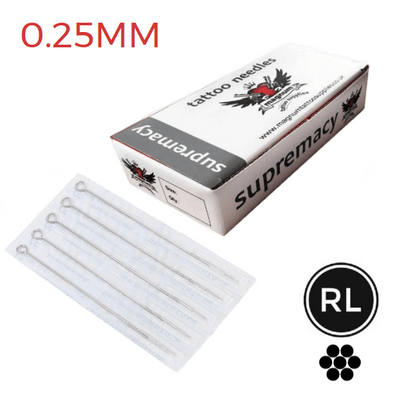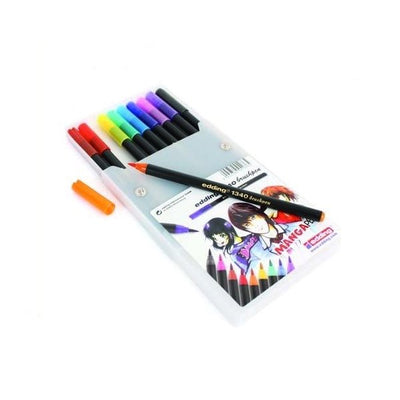In the world of tattooing, the tattoo machine is arguably the most vital tool in an artist's repertoire. It serves as the heart and soul of this intricate craft, an extension of the artist's hand. Over the years, tattoo machines have undergone a remarkable transformation, evolving from simple, homemade devices to sophisticated pieces of engineering that have revolutionised the inking process and reshaped the landscape of tattoo artistry itself.
The origins of the tattoo machine
The earliest forms of tattooing were done by hand, using rudimentary tools like sharpened bones or thorns. It wasn't until the late 19th century that American inventor Samuel O'Reilly patented the first electric tattoo machine in 1891. O'Reilly's design was inspired by Thomas Edison's autographic printing pen, which used a similar rotary mechanism. This invention revolutionised the art of tattooing, making it faster and more precise.

The birth of the coil tattoo machine
In the early days of tattooing, coil tattoo machines reigned supreme. These machines, known for their distinctive buzzing sound, operate on the principle of electromagnetic induction. When an electric current flows through wire coils, a magnetic field is generated, which is the reason why the armature bar to move up and down. This motion, in turn, propels the tattoo needle, allowing for precise and controlled skin punctures.
The coil machine, though conceptually straightforward, demanded finesse and expertise to set up and maintain effectively. Each coil machine possessed its unique personality, and adjusting factors like springs, contact screws, and armature bars could significantly alter its performance, affecting everything from line weight to shading techniques. Tattoo artists became part-time mechanics, constantly tweaking and tuning their machines to perfection.
Despite their versatility and the capacity for customisation, coil machines came with their own set of drawbacks. They were typically heavier, produced more noise, and had the potential to cause more trauma to the skin if not wielded with skill and precision.
Technology advances in coil machines
As the art of tattooing gained popularity, innovations in coil technology emerged. The development of dual-coil machines provided more power and efficiency, enabling tattoo artists to experiment with different tattoo styles and techniques, pushing the boundaries of what was possible.
The rise of rotary tattoo machines
As the tattoo industry continued to evolve, it embraced innovation, ushering in the era of the rotary tattoo machine. Rotary machines, in stark contrast to their coil counterparts, feature a motor that rotates to move the needle. This design is characterised by simplicity, with fewer moving parts than coil machines.
The notable advantages of rotary machines quickly caught the attention of tattoo artists. The consistent needle movement of rotary machines translated into smoother lines and a more uniform fill, significantly enhancing the quality of tattoo work. Their reduced weight and minimal vibration meant that artists could work for longer hours without the fatigue associated with the heavier, vibrating coil machines.
The transition to rotary machines was often seamless for many artists, yielding immediate and noticeable results. Not only did these machines steady the artist's hand due to their reduced weight and vibration, but clients also reported a less painful experience. This transition opened doors for artists to explore different techniques and styles that were previously more challenging to achieve with coil machines.
Advanced features of rotary machines
- Adjustable stroke length
- Variable speed control
- Compatibility with different needle configurations
- Lightweight and ergonomic design
- Low vibration
- Quiet operation
- Compatibility with power supplies
- Improved hygiene features
- Durability and low maintenance
- Compatibility with wireless technology
- Advanced materials
- Customisation options
Embracing change and innovation
While some tattoo artists initially hesitated to part with their time-tested coil machines, the undeniable benefits of rotary machines led to their widespread adoption in tattoo studios worldwide. The tattoo industry, however, did not stop at the rotary machine; it continued to push the boundaries of innovation.
The tattoo supplies market has seen a continuous influx of newer technologies, such as pneumatic tattoo machines that rely on air pressure to drive the needle. While these innovations haven't become as mainstream as coil or rotary machines, they exemplify the spirit of progress that drives tattoo equipment forward.
The future of tattoo machines
The tattoo industry continues to push the boundaries of technology. One of the recent innovations in tattoo machines is the development of wireless and battery-operated devices, offering artists more freedom of movement and reducing the clutter of cords in the workspace. Additionally, advancements in materials and engineering have led to quieter and more efficient machines.
Tattoo machines are also incorporating smart features such as Bluetooth connectivity, which allows artists to control machine settings via a smartphone app and share information with clients. This enables better collaboration and communication between artists and their customers.
Final thoughts
The evolution of tattoo machines from coil to rotary and beyond reflects the ever-changing landscape of tattooing. These advancements have not only made the tattooing process more efficient and precise but have also expanded the possibilities for artists to create intricate and detailed designs.
As technology advances, the future of tattoo machines looks promising, with further innovations on the horizon. Tattooing remains an art form that adapts to the times, and the evolution of tattoo machines is a testament to the industry's dedication to excellence and creativity.



























































 Studio supplies
Studio supplies












 Power & batteries
Power & batteries








 Aftercare
Aftercare





















 Apprentice
Apprentice


 Piercing & jewellery
Piercing & jewellery







 PMU supplies
PMU supplies




 New arrivals
New arrivals
 Gift vouchers
Gift vouchers
 Shop all
Shop all


















































